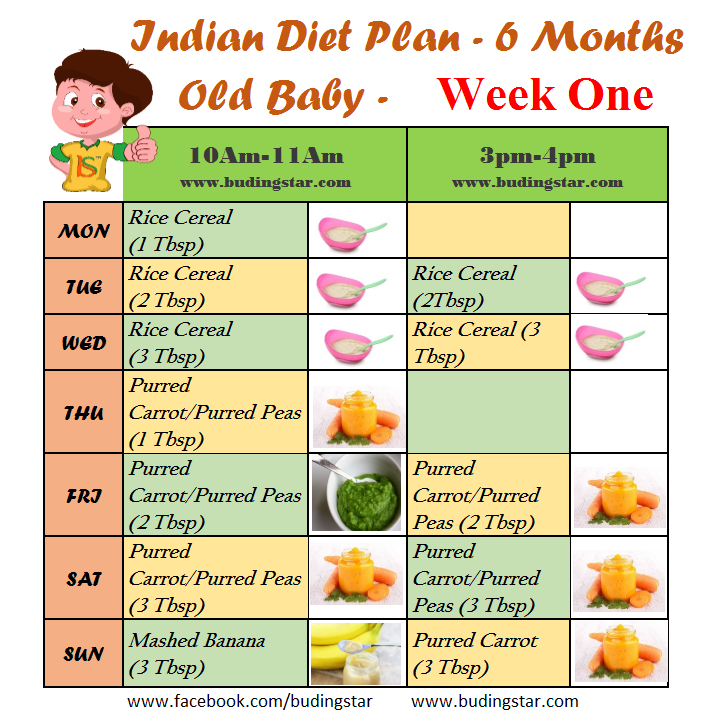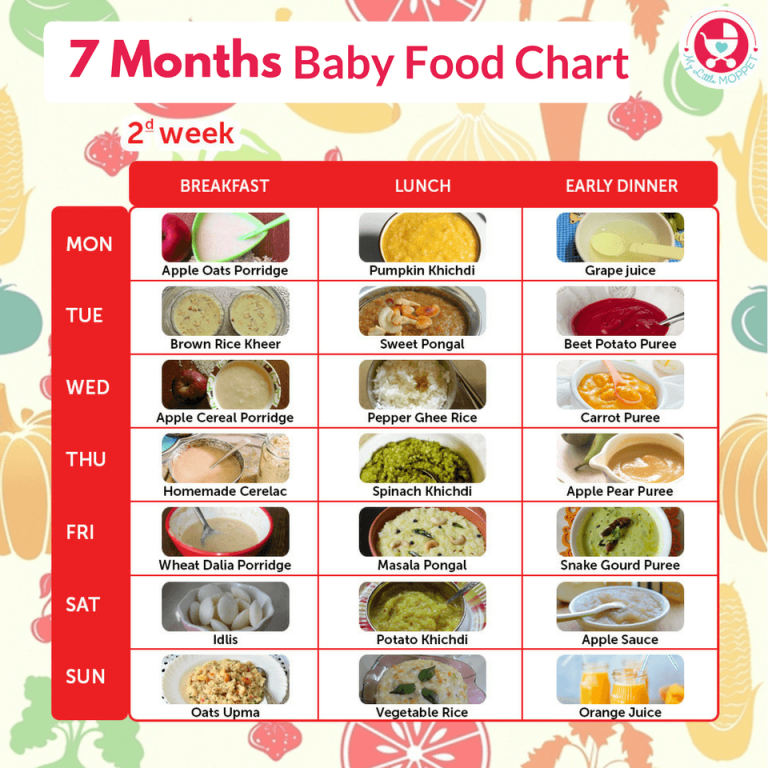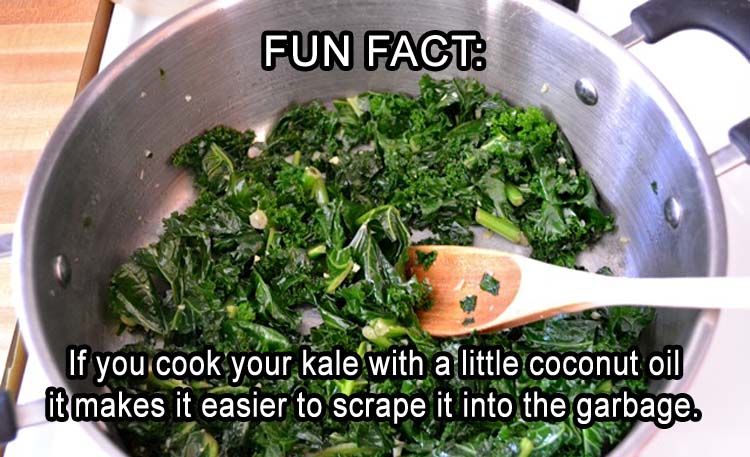6Th month baby feeding schedule
6-month-old feeding schedule: Timetable
A baby’s 6-month birthday marks an important transition as many infants are ready to start trying solids at this point.
While breast milk or formula should still form the core of a 6-month-old’s diet, some caregivers find that a child’s feeding schedule shifts as they begin eating purees and other solids.
Share on PinterestWhen a baby reaches 6 months of age, purees and other solid foods can usually become part of their diet.Babies typically need to eat every 2–3 hours, five to six times during the day.
It is normal for a baby’s schedule to change from day to day, or for babies to eat different amounts of food each day.
Caregivers can follow a baby’s cues, even if they have established a schedule already. A parent or caregiver does not need to deny food to a baby just because it has already eaten.
Introducing solids
The American Academy of Pediatrics (AAP) advise that parents exclusively breastfeed infants for about 6 months if possible. By the time a baby hits their half birthday, they may be ready to try solids.
A baby may be ready for solids at 6 months if:
- they have good head control
- they can hold their head up for extended periods
- they can sit up with no or very little assistance
- they no longer have the tongue thrust reflect to push food out of the mouth with the tongue
- they show interest at mealtime and lean toward food if a caregiver offers it
At this age, breast milk or formula is still a baby’s most important form of nutrition and solids are an addition.
Not all 6-month-olds are ready for solids. If a baby shows no interest, a caregiver can wait a few weeks and try again.
Giving a baby 1–2 tablespoons of iron fortified cereal or fruit or vegetable purees per feeding can be a good place to start.
Gradually increasing this as the baby’s interest and appetite increase can follow.
To ensure a baby eats sufficient food, the adult can breastfeed or give a bottle before offering solids.
Caregivers can give solid food as a supplement each time they nurse the baby or give a bottle. Or, they can include the baby in family meals by giving solids at mealtime.
At 6 months of age, when an infant may begin to want solids, a caregiver can offer these just once per day.
Choosing a time of day when the caregiver is relaxed and not pressed for time, and the baby is not overly hungry, fussy, or tired often works best.
Once a baby is enjoying their once-a-day solids, the frequency can increase to two and then three times a day.
There is no “right” schedule, but caregivers should plan to increase the number of solids babies get gradually.
At 6 months, the goal is not to introduce new foods and eating habits. Similarly, there is no need to force a baby to eat solids or restrict new food if a baby indicates they want more.
Regardless of their size and eating habits, babies need access to an expanding variety of solid foods.
Most babies will need to try new foods several times before they feel comfortable eating them. It is fine to let a child eat at their own pace, in the way that feels right to them.
It is fine to let a child eat at their own pace, in the way that feels right to them.
It is acceptable at this age for a baby to play with their food since this is a way of exploring new things.
Breast milk and formula
Breast milk or formula remains the most important food at 6 months of age. The easiest way to ensure a baby eats enough is to nurse or formula feed them on demand when they show signs of hunger.
Research supports the value of feeding on demand.
A longitudinal study of 10,419 children found better academic achievement and a four-point Intelligent Quotient (IQ) advantage at 8 years old among children whose caregivers fed them on demand.
However, the caregivers of these children got less sleep and had lower overall well-being.
These results may point to adults finding a happy medium, such as steadily shaping the baby’s preferred schedule into one that works for them.
In general, caregivers should plan to breastfeed babies 3 to 5 times per day, and sometimes more.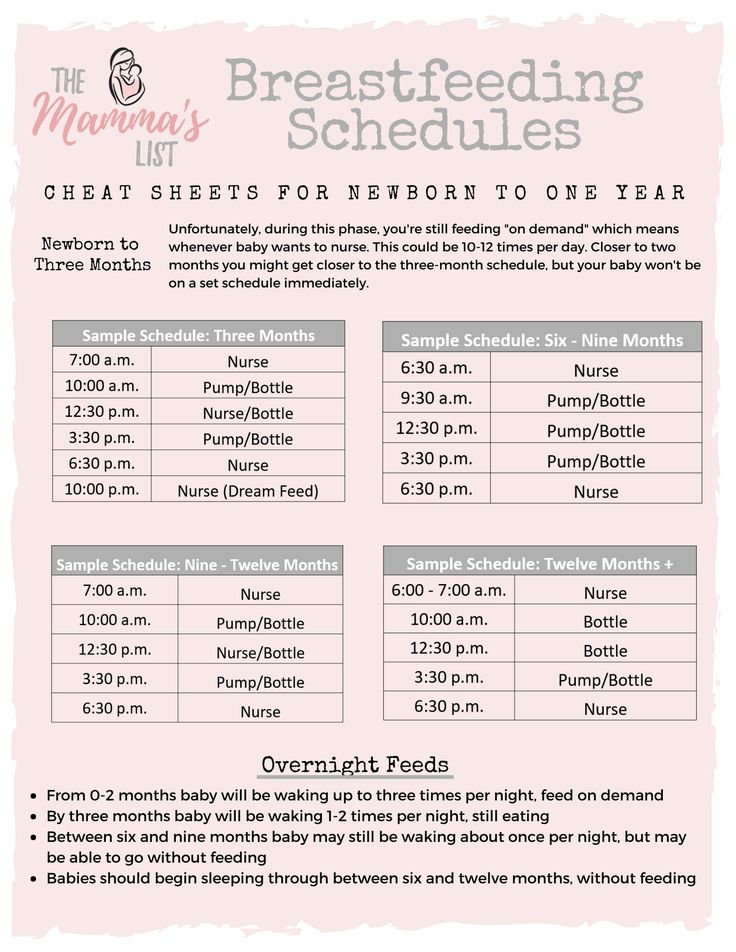 However, babies vary greatly and every 3–4 hours is common, which can amount to up to eight times in 24 hours.
However, babies vary greatly and every 3–4 hours is common, which can amount to up to eight times in 24 hours.
Some babies prefer cluster feedings, during which they nurse several times in a short period. Growing or sick babies may also nurse more frequently.
If a baby has formula, giving 24–32 ounces of iron fortified formula spread over five or six feeds per day is typical. While some babies sleep through the night at 6 months, others will still wake or want to feed.
A nighttime “dream feed” around the time caregivers retire for the evening may help babies sleep longer.
Other liquids
Babies do not need juice at 6 months. The extra calories can decrease a baby’s appetite, and the sugar may damage a child’s developing teeth. Soda and other drinks are not healthful for babies.
Babies can have water beginning at 6 months, or when caregivers introduce solids, whichever is later. Introducing a cup of water along with solid meals may be helpful.
Around 6 months old, some babies begin transitioning from three or four daily naps to two.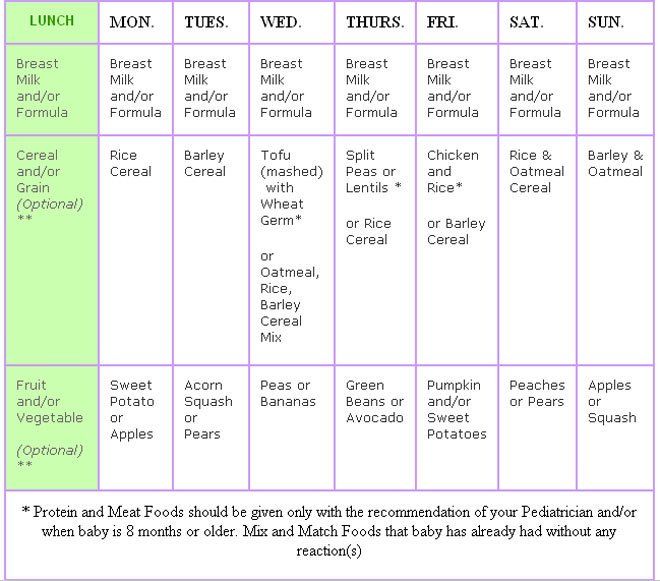 The baby might take a midmorning nap and a midafternoon nap. At this age, most babies need 12–15 hours of sleep per day, and naps usually last 1–3 hours.
The baby might take a midmorning nap and a midafternoon nap. At this age, most babies need 12–15 hours of sleep per day, and naps usually last 1–3 hours.
Caregivers are best finding a schedule that works for them and the child. Some children are used to falling asleep by nursing or with a bottle. Others happily doze off on their own.
A caregiver can follow the baby’s cues and work to adapt their needs to the family’s schedule slowly.
These feeding tips may help:
- Babies may be hungrier after waking from a long nap. This can be a good time to try solids after offering formula or breast milk to ease their initial hunger.
- There is no evidence that adding cereal to a bottle helps babies sleep longer. Doing so can increase their risk of choking.
- Babies must never have food without close supervision. nor have solids, even very thin purees, in bed.
Deciding what, when, and how to feed a baby can be challenging, especially during the transition to solids. As long as babies get regular breast milk or formula, caregivers do not need to rush the transition to solids or worry that babies are not eating enough.
As long as babies get regular breast milk or formula, caregivers do not need to rush the transition to solids or worry that babies are not eating enough.
Some babies take longer than others to embrace solids, while some will eagerly eat anything. The right schedule is one that works for the baby and family. This schedule may change over time which is also fine.
Example 6 Month Old Feeding Schedule
As you make the transition to introducing solid foods around six months, life starts to change!
The thought of introducing new foods on top of breast milk or formula and naps can leave even the calmest of new parents apprehensive.
Here are some things to keep in mind as you start to introduce those first foods to your baby, and a sample schedule to help you wrap your head around what to do!
More: For more help with baby led weaning and how to help your baby succeed with eating, be sure to check out this article with a comprehensive guide to baby led weaning and first baby foods!
6 month old baby’s feeding schedule pointers
Before we get to the actual schedule, here are a few things to keep in mind.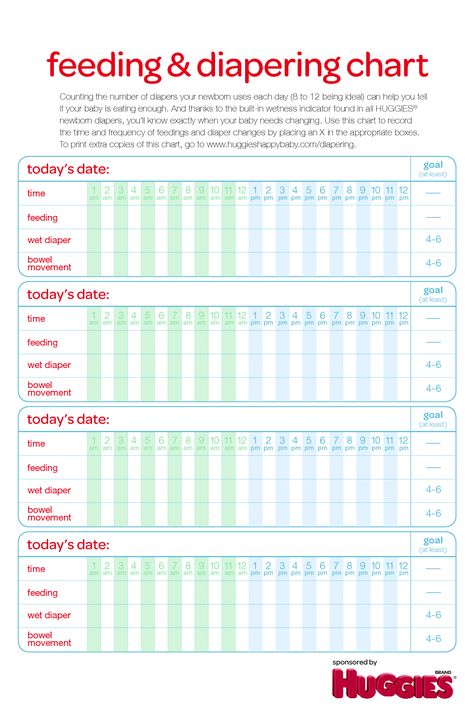
When to Start Solid Foods With Baby
The American Academy of Pediatrics recommends starting solid foods around 6 months. In this case solid food means traditional baby food or baby led weaning style finger foods. Really, anything other than breast milk or infant formula!
The best way to tell if your baby is ready to start solid foods is by following their developmental signs of readiness.
Once they are ready for foods, grab a good high chair, take a look at the schedule below, and you can start them with some modified table foods or a baby cereal and pureed foods.
Learn How to Set The Best Foundation For Feeding Your Baby!
Learning what to feed your baby is helpful. But what about all the rest?! Things like how they should be positioned for eating, what you should say at meals, and how to set up an environment that fosters a positive feeding relationship-for life!
These are the things your parents and friends don't have the answers for, and they're the things that make the biggest difference!
Grab the Foundations course where I walk you through it all.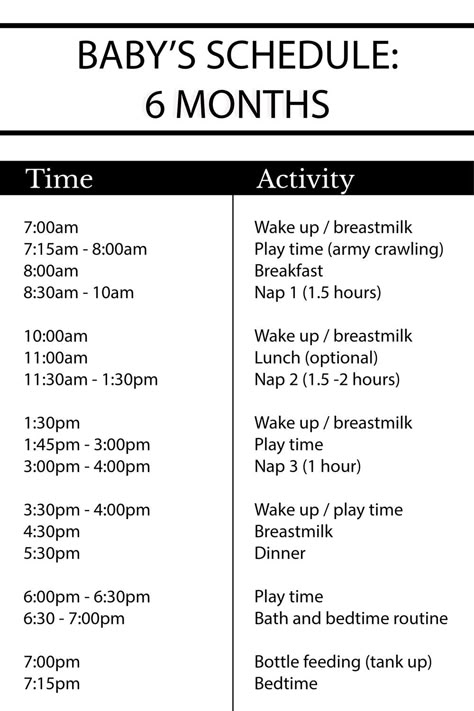
Breast Milk or Formula Is Still Their Primary Source of Nutrition
A 6 month old baby’s main source of nutrition is still going to be breast milk or formula. Introducing food is to help them get used to it, form a positive association with food, and to start getting some additional nutrients that they start to need right around that 6-month mark.
But your baby’s needs don’t all of a sudden change to where they need an additional three meals a day and a ton of food and eating opportunities!
The idea is to start slowly and follow your baby’s cues as you introduce more food and eating opportunities.
Keep giving breast milk or formula as you were before. That can mean on demand if you’re breastfeeding, or following the same general schedule you were before for formula-fed babies and breastfed babies.
Their amount of formula or breastmilk won’t necessarily change. The average baby at this time is usually going to be nursing 5-6 times a day, or taking 24-32 ounces of formula. In many cases, it might actually increase because they are having growth spurts and will start to need more!
In many cases, it might actually increase because they are having growth spurts and will start to need more!
After you give them their breast milk or formula, add in a meal 30-60 minutes later. This doesn’t need to be set in stone, as what works for your baby might differ from someone else’s!
The general idea is to offer breast milk or formula first, give them a bit of a break, and then offer them solid foods.
Your 6 Month Old Baby Won’t Eat That Much!
At the beginning, babies take time to learn how to eat. Most babies will need to get the handle of how to get food to their mouth and down their throat. They won’t really be eating solid meals for several weeks in most cases.
Don’t panic if you’re a few weeks in and they still aren’t getting much solid food down. Give it some time. Remember, their primary source of nutrition is still their breast milk or formula!
And if you aren’t sure what to expect when it comes to solid foods, make sure to grab the Starting Solids course to help prepare you and give you confidence in feeding and to help you set up a great foundation for your feeding relationship with them.
Sample Feeding Schedule For A 6-Month-Old Baby
The biggest thing to keep in mind is that every baby is going to be different. I generally shy away from giving out specific schedules, because different things work for different babies.
But after many parents have asked consistently for it, here is an example schedule for your 6 month old to help you with a place to start for your daily routines.
I’m giving specific times to help you visualize it, but think of this more as a spacing example for your day than an exact example of when you should be doing these things.
A Note On Your Baby’s Sleep Schedule
All babies will have different sleep schedules. This is especially true for the first year of your baby’s life. Some babies will have a short nap in the morning, while others will take a long nap.
Sometimes that happens no matter how hard you try to maximize the hours of sleep your baby gets!
The best thing you can do is to be consistent in your wake windows. Meaning if your baby gets up at 7 am, you want to be consistent with something like a 2 hour wake window. This means that they will go back down for their first nap 2 hours after waking up.
Meaning if your baby gets up at 7 am, you want to be consistent with something like a 2 hour wake window. This means that they will go back down for their first nap 2 hours after waking up.
Follow this same pattern for their later naps and plan to put them down based on when they woke up, not necessarily the time the clock says.
As the day goes on, their wake window might get slightly longer. And as they grow, they will generally start to take longer naps and lengthen their wake time between naps.
Sample 6 Month Old Feeding Schedule With Breakfast
Here is an example of how I might space my day if I was planning to feed my baby solid foods at breakfast time. When they are first starting to eat and for the first several weeks of solid foods, they really do only need one meal a day.
Daily Schedule With Breakfast
- 6:30 am: Wake-up, then nurse or bottle
- 7:30-8:00 am: Breakfast (Head to this article for specific help with what to serve your baby at meals.
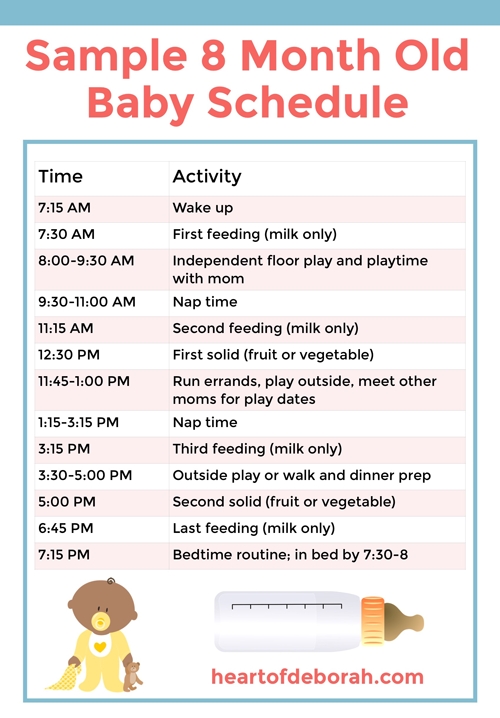 )
) - 8:30 am: First morning nap
- 10:30 am: Nurse or bottle
- 12:00 pm: Second nap
- 1:30 pm: Nurse or bottle
- 4:00 pm: Third nap
- 5:00 pm: Nurse or bottle
- 6:30 pm: Nurse or bottle, then bedtime routine and sleep
Sample Feeding Schedule With Dinner
Here is a sample feeding schedule with dinner as your meal for the day. Again, this is just an example. To serve a different meal, simply aim to have the food 30-60 minutes after you have given them breast milk or formula.
You do not need to serve food at the same meal every day, or exactly at the same time. If your baby sleeps through your normal lunch time when you were planning to feed them, just plan to feed them at dinner.
I do recommend aiming to get in at least one meal a day once you start giving them solid foods to help them get in the practice that they need.
Daily Schedule With Dinner
- 6:30 am: Wake-up, then nurse or bottle
- 8:30 am: First morning nap
- 10:30 am: Nurse or bottle
- 12:00 pm: Second nap
- 1:30 pm: Nurse or bottle
- 4:00 pm: Third nap
- 5:00 pm: Nurse or bottle
- 5:30 pm: Dinner (Here are some dinner ideas for babies)
- 6:30 pm: Nurse or bottle, then bedtime routine and sleep
These Schedules Are Just Starting Places!
This is just a final reminder for you that these really are just places for you to start. Every baby and family will find a different flow that works for them.
Being consistent in wake windows is the most important thing at this age. Sleeping really is primary!
Sleeping really is primary!
A tired baby isn’t going to want to sit at the table and focus on learning how to eat. So do your best to let sleeping and breast milk or formula be the main concerns, and add in meals in between those.
As your baby gets older, the feeding schedule for 7 month olds really doesn’t change much.
They might drop a nap, have longer wake windows, and will likely start wanting to have more meals.
To increase meals to 2 a day, simply keep the same things in mind and add a meal 30-60 minutes after breast milk or formula when they are awake.
Looking for help on a feeding schedule for your toddler or 1-year-old? Check out this article with a sample 1 year old feeding schedule!
WHO recommendations for the introduction of complementary foods
08.08.2019
Readiness of the child to complementary foods According to the WHO recommendation, existing for 2018, it is optimal to introduce complementary foods to an infant at 6-8 months. Until six months, the baby's gastrointestinal tract is still not sufficiently formed, all the necessary enzymes are not produced for the assimilation of food other than mother's milk or formula. And by 9-10 months, the child can already form stable stereotypes of eating only liquid food, and overcoming them will be painful and difficult for the baby. nine0003
Until six months, the baby's gastrointestinal tract is still not sufficiently formed, all the necessary enzymes are not produced for the assimilation of food other than mother's milk or formula. And by 9-10 months, the child can already form stable stereotypes of eating only liquid food, and overcoming them will be painful and difficult for the baby. nine0003
Thus, WHO defines the following signs of a child's readiness for the introduction of complementary foods: the maturity of the digestive system; extinction of the solid food ejection reflex; the appearance of the first teeth, making it possible to chew; the readiness of the baby to be stable in an upright position; emotional readiness for new tastes and sensations.
Complementary feeding system WHO has developed recommendations for three complementary feeding options: cereals, vegetables, and meat.
Fruit complementary foods are not recommended for cereals and vegetables. This is due to the fact that up to 8-9 months the gastrointestinal tract of the baby is not ready for the absorption of raw fruits and fruit juices. It is vegetables and cereals that will populate the intestines with the necessary bacteria for the absorption of fruits.
It is vegetables and cereals that will populate the intestines with the necessary bacteria for the absorption of fruits.
Kefir, according to the WHO, is not considered complementary foods because it is not a solid food. The WHO complementary feeding scheme includes kefir only as an additional food from 8 months. The introduction of cow's milk is recommended by WHO only from 12 months. nine0003
Any complementary feeding scheme assumes that portions of complementary foods will systematically increase from half a teaspoon to 100-200 g. The first dishes for complementary foods are prepared exclusively with one-component. Each next component is introduced only after complete addiction to the previous one (6-7 days).
Product sequence
The following sequence of introduction of complementary foods is proposed.
- Vegetables at 6 months. nine0022
- Porridges on the water (oatmeal, buckwheat, corn) at 6.5 - 7 months.

- Fruit puree, yolk at 8 months.
- Milk porridge at 8-9 months.
- Meat puree at 9 months.
- Meat by-products at 9-10 months.
- Kefir, cottage cheese, yogurt at 9-10 months.
- Fish at 10 months.
- Juice at 10-12 months.
- Berry puree at 12 months. nine0022
- Meat broths at 12 months.
The introduction of vegetable oil (olive, sunflower) in puree and porridge is allowed from 6 months: a scheme with 1 drop with a gradual increase to a volume of 1 teaspoon. The introduction of butter begins at 7 months: the scheme is from 1 g to 10 g in porridge.
For formula-fed babies, the first feeding schedule is similar, with a few exceptions. For these babies, it is better to introduce complementary foods from 5 months, because the milk mixture does not give the small body all the “building material”. The introduction of complementary foods differs only in terms: vegetable purees and cereals are introduced a month earlier. nine0003
nine0003
First cereals
If the child's weight is significantly less than normal, WHO recommends starting complementary foods with non-dairy cereals. For babies, cereals are prepared only with non-dairy, unsalted, semi-liquid, absolutely homogeneous in consistency. The first cereals are prepared from cereal flour (the sorted and washed cereals are carefully ground and crushed).
The following sequence of introduction of cereals is proposed: buckwheat, rice, corn, oatmeal, semolina. It is recommended to cook semolina porridge only once a week, because it contains practically no nutrients, but it is rich in gluten, which can cause problems in the intestines. Proportion for the preparation of the first porridge: 5 g of cereal flour per 100 ml of water. After slightly cooling the finished porridge, chop again. In the finished porridge, you can add 1-2 drops of vegetable oil or a little expressed breast milk. nine0003
From 9 months, the baby's nutrition system involves multicomponent cereals, from products already well known to the child. You can already add vegetables and fruits familiar to the baby to cereals. At 9 months, it is allowed to cook barley and millet porridge for babies. And by 10-11 months, cereals on the water will be a great addition to meat and fish meatballs and steam cutlets.
You can already add vegetables and fruits familiar to the baby to cereals. At 9 months, it is allowed to cook barley and millet porridge for babies. And by 10-11 months, cereals on the water will be a great addition to meat and fish meatballs and steam cutlets.
Vegetable food
The first purees are made from one vegetable.
The sequence of introducing vegetables into complementary foods for babies suggests the following order: zucchini, cauliflower, pumpkin, potatoes, carrots, green peas, beets. These vegetables are introduced within 6-9baby months. After 1 year, you can give your child cucumbers, eggplants, tomatoes, sweet peppers, white cabbage. After preparing the puree, make sure that the mass is completely homogeneous, there are no fibers and small particles, the consistency is semi-liquid. Don't salt. Add 1-2 drops of vegetable oil or expressed milk.
If the child refuses vegetable complementary foods, cancel this product for 1-2 weeks. Try to temporarily replace it with another and return to it after a while.
Try to temporarily replace it with another and return to it after a while.
Meat supplements
From 9 months old, the first meat purees are recommended for babies. The first courses are recommended to be prepared from lean meats: rabbit; quail; turkey; chicken.
Complementary foods for a 6-month-old baby are recommended to be introduced in the morning. This will allow you to track the child's reaction to an unfamiliar product before a night's sleep: is there a rash, intestinal disorders, anxiety in the baby, profuse regurgitation. It is better to give vegetables or porridge first, and then saturate with breast milk or formula. Gradually, porridge and a vegetable dish will replace one full meal. The dish must be warm and freshly cooked. Gradually, by the age of 1, your baby will develop taste preferences. You will know what dishes he eats with pleasure. In the meantime, try to fully expand the child's diet with products necessary for growth and development.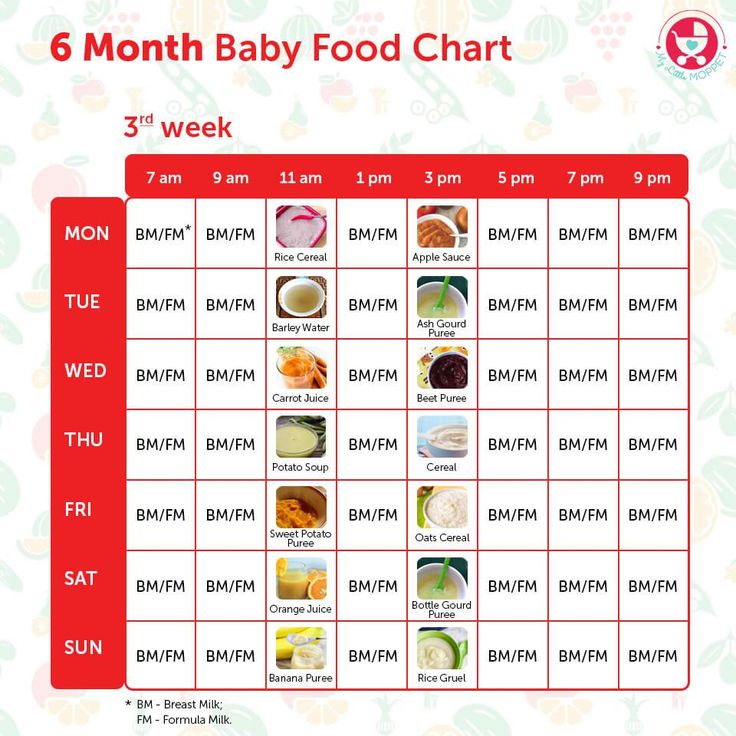 nine0069
nine0069
Be healthy!!!
Complementary foods at 6 months | Useful tips from the Tyoma brand
Pediatricians around the world, including experts from the World Health Organization, unanimously believe that the introduction of complementary foods should be carried out in the interval of 4-6 months.
Early introduction of complementary foods (up to 4 months). fraught with the development of allergic reactions and indigestion.
Late introduction of complementary foods, from 7 months, can lead to a deficiency in the child's diet of essential nutrients, an iron deficiency state at the age of 9-10 months, eating disorders, delayed development of chewing skills and swallowing of thick foods.
With the normal development of the child and the absence of signs of iron deficiency anemia, complementary foods can be introduced from 6 months. This applies to both formula-fed and breast-fed babies.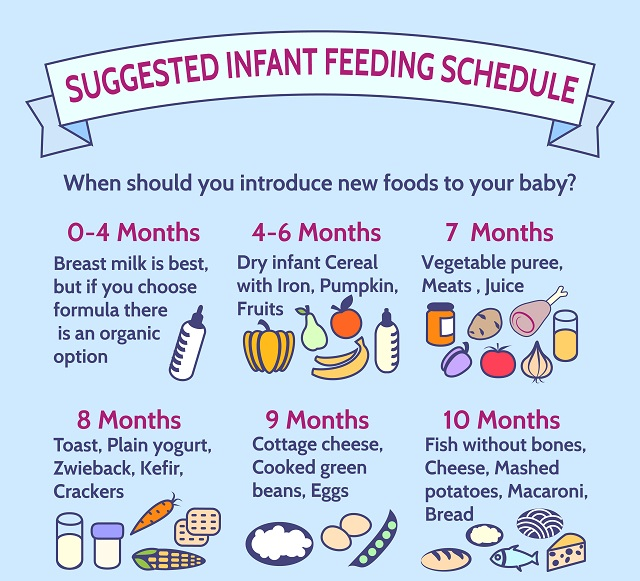
Signs that a baby is ready to breastfeed include
- Absence of the spoon-ejection reflex
- the presence of a bright food interest in the baby to the food of adults nine0022
It is important to remember that a child’s lack of teeth and the ability to sit are not signs of a baby’s unpreparedness for eating thick food.
It is very important to understand the main goals of the introduction of complementary foods:
- Provide the child with the necessary nutrients.
- Develop a child's food interest, introduce him to new tastes.
In no case should the introduction of complementary foods be of a violent nature, since this will not only not contribute to the development of a child’s food interest, but can also lead to a complete refusal of the baby from complementary foods, which will destroy the main goals of complementary foods.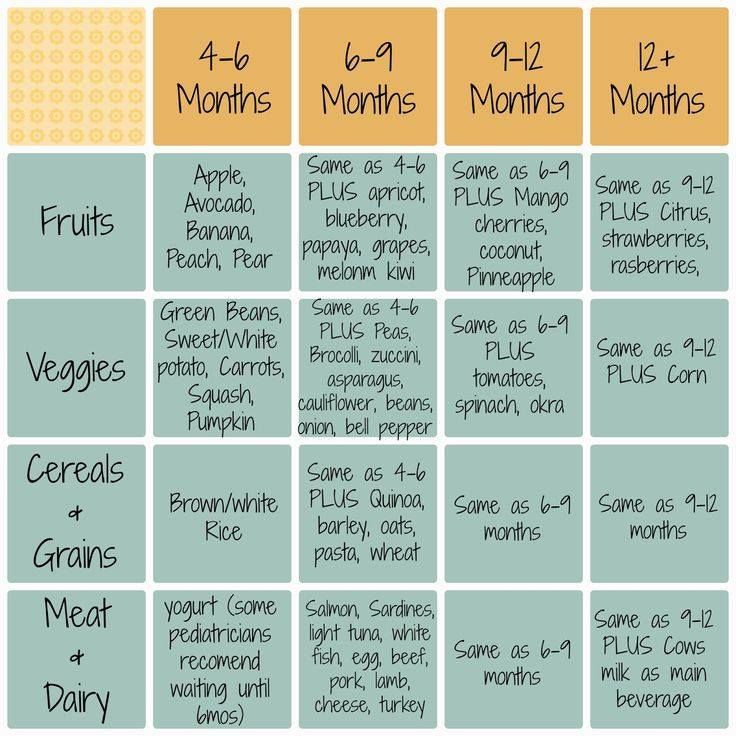 nine0003
nine0003
How to start introducing complementary foods at 6 months of age?
The first product of complementary foods, regardless of the start date of the introduction of complementary foods and the type of feeding of the baby (breast or artificial), should be energy-intensive foods: porridge, or vegetable puree.
If the child has a liquefied or unstable stool, and there is also a lack of body weight, then it is better to choose porridge as the first complementary food. After 3-4 days from the beginning of the introduction of porridge, butter can be gradually added to it (up to 5 g per serving of porridge in 150 g) nine0003
If the child has a tendency to constipation, then it is better to choose vegetable marrow puree as the first complementary food, which can have a mild laxative effect on the child's stool. Starting from the 3-4th day of the introduction of vegetable puree, vegetable oil can be gradually added to it (up to 5 g per serving of vegetables in 150 g)
What products are better to give preference to at 6 months?
Kashi
The first cereals can be buckwheat, rice or corn.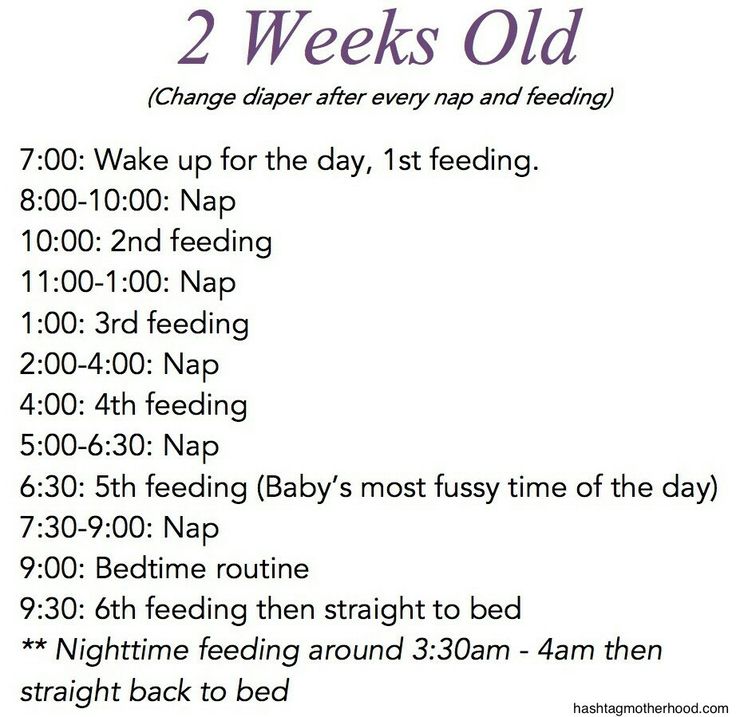 They must be dairy-free and can be diluted with water or breast milk, or the mixture that the baby eats. Later, you can introduce oatmeal and millet porridge nine0003
They must be dairy-free and can be diluted with water or breast milk, or the mixture that the baby eats. Later, you can introduce oatmeal and millet porridge nine0003
Vegetables
The first vegetable puree can be zucchini, broccoli, or cauliflower. Later, kohlrabi, potatoes, green beans, white cabbage, green peas, celery can be introduced into the diet.
Fruit
The third type of complementary foods can be fruit puree from apples, pears or bananas. Later, you can introduce mashed apricot, peach. For starters, fruit puree may not be given to the child separately, but it is better to mix it with cereal or vegetables so that the child does not begin to prefer the sweet taste of fruits. When the amount of fruit puree reaches 50 g or more, it can also be given separately, for example, after the child has eaten porridge or cottage cheese. nine0003
Juices
Juices should not be the first feeding, in addition, they can not be introduced into the baby's first year of life at all, given their sweet taste and low nutritional value.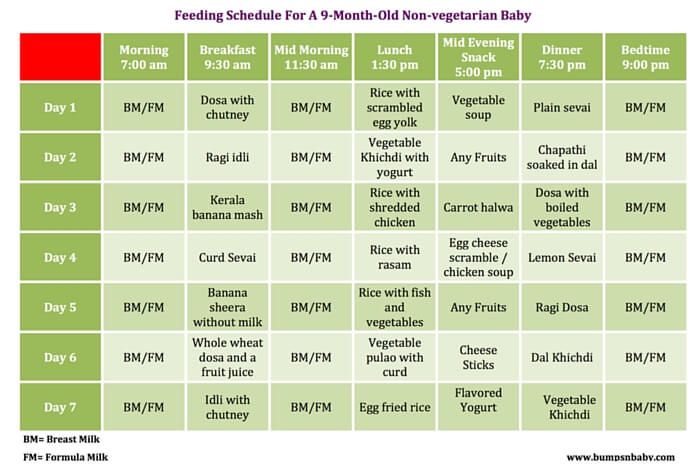
Basic rules for the introduction of complementary foods from 6 months
- A faster introduction of the main complementary foods into the child's diet compared to their introduction from 4 or 5 months, namely, bringing the amount of one product to the age volume can be carried out in 5-7 days. nine0022
- Introduction of complementary foods before breastfeeding or formula.
- Feeding the child is carried out not at the request of the child, but at the request of the mother. What it means: you should try to introduce complementary foods regularly and at the same time, allocating for this conditionally time for the future breakfast, lunch and dinner (afternoon snack).
How to start the introduction of a new product?
The introduction of a new product should be gradual. nine0003
- On day 2 - 3 tsp. (15 g)
- On day 3 - 6 tsp. (30 g)
- Day 4 - 50 g
- Day 5 - 100 g
- On the 7th day - 150 g
Important!
If on the 5-7th day of the introduction of a new product, the baby still cannot eat 100-150 ml of porridge or puree at once, then this amount can be divided into 2 doses, for example, give 100 ml of porridge in the morning and 50 ml in the evening.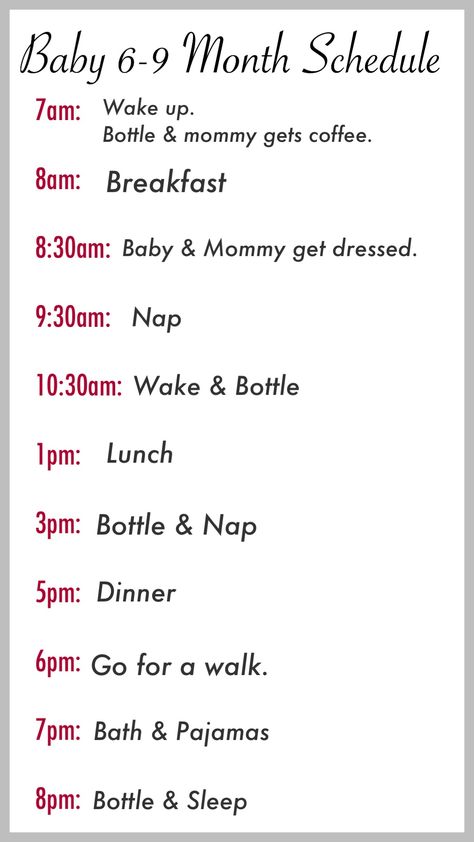 nine0003
nine0003
From the second week of the introduction of a new product, one milk feeding can be completely replaced with complementary foods.
Approximate weekly feeding schedule
If we start complementary foods with vegetable puree, then the schedule might look something like this:
- Morning feeding (6:00 am): breast milk or infant formula 180-200 ml
- Breakfast (10:00): breast milk or infant formula 180-200 ml nine0022
- Lunch (14:00): broccoli 10-150 grams. Supplementing with breast milk or infant formula
- Afternoon snack (18:00): breast milk or infant formula 180-200 ml
- Night feeding (22:00): breast milk or infant formula 180-200 ml
2 weeks
From the second week, you need to start introducing dairy-free porridge.
- Morning feeding (6:00 am): breast milk or infant formula 180-200 ml nine0022
- Breakfast (10:00): porridge 10-150 g, supplemented with breast milk or infant formula
- Lunch (14:00): Broccoli 150 grams.
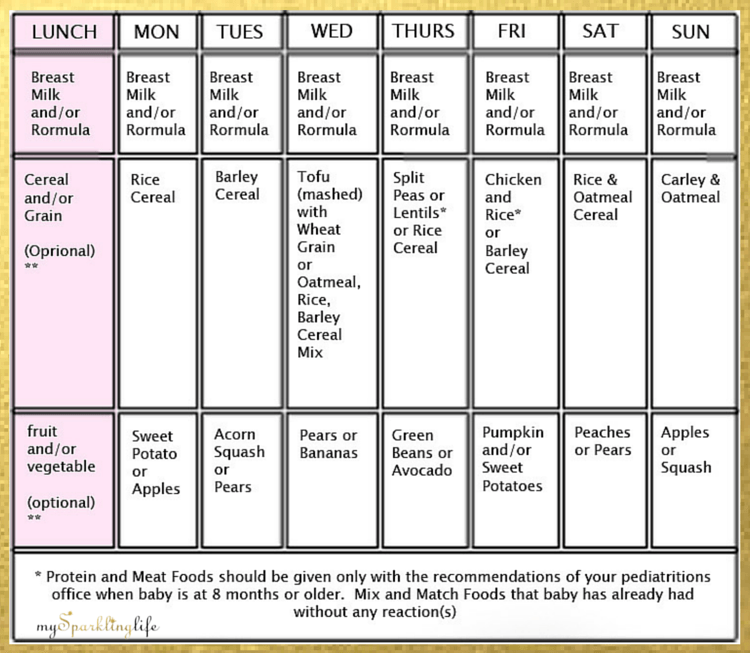 Vegetable oil 5 g Supplementary feeding with breast milk or infant formula up to 50 ml
Vegetable oil 5 g Supplementary feeding with breast milk or infant formula up to 50 ml - Afternoon snack (18:00): breast milk or infant formula 180-200 ml
- Night feeding (22:00): breast milk or infant formula
3 week nine0003
From the third week, you need to start introducing meat puree, which is most convenient to add to vegetable puree
- Morning feeding (6:00 am): breast milk or infant formula 180-200 ml
- Breakfast (10:00): porridge 150 g, supplemented with breast milk or infant formula
- Lunch (14:00): Broccoli 150 grams. Vegetable oil 5 g Meat puree 5-20 g Supplementation with breast milk or infant formula up to 50 ml nine0022
- Afternoon snack (18:00): breast milk or infant formula 180-200 ml
- Night feeding (22:00): breast milk or infant formula
4 week
From the fourth week, you can introduce fruit puree, which is most convenient to add to porridge
- Morning feeding (6:00 am): breast milk or infant formula 180-200 ml
- Breakfast (10:00): porridge 150 g, fruit puree up to 50 g nine0022
- Lunch (14:00): Broccoli 150 grams.
